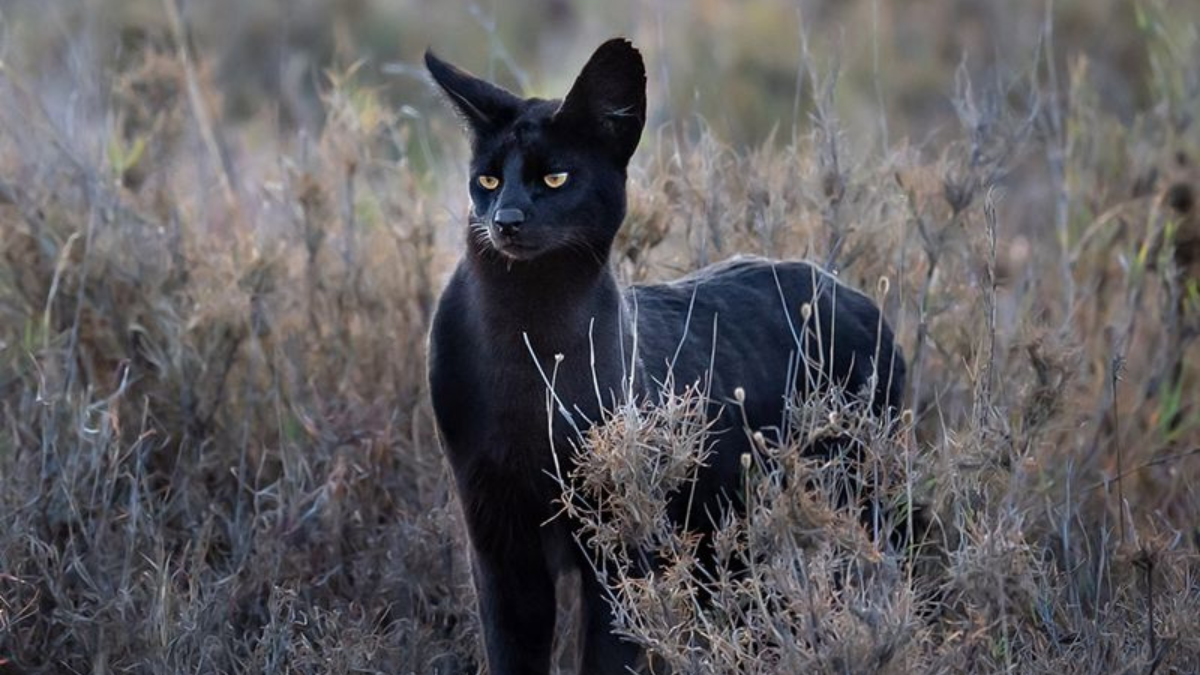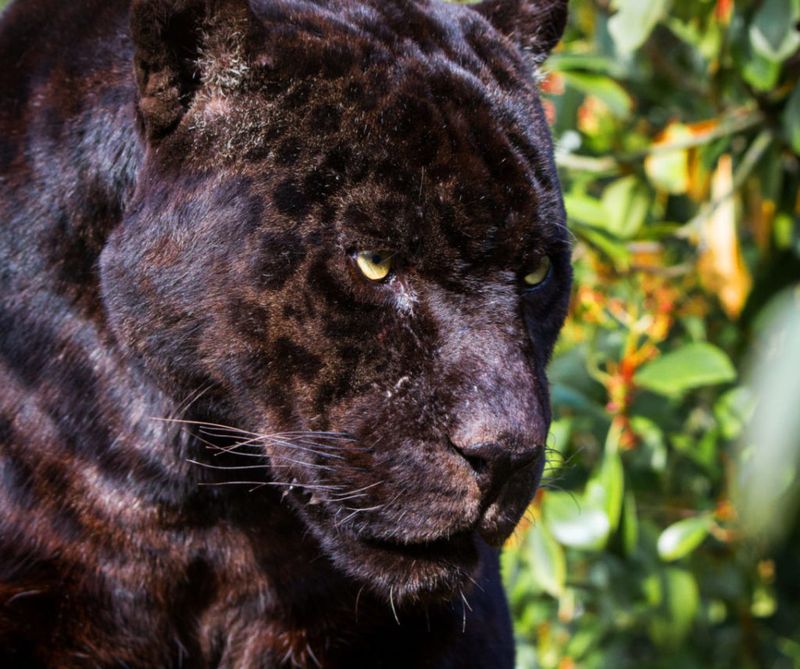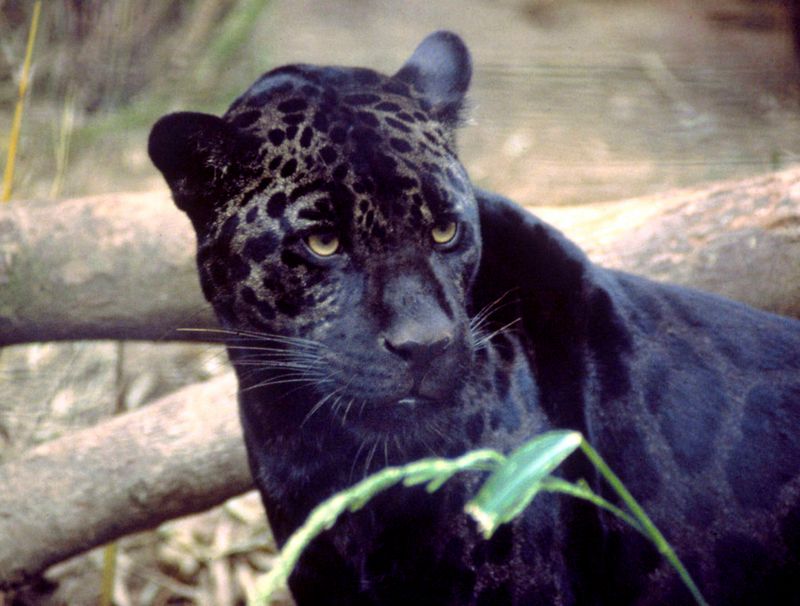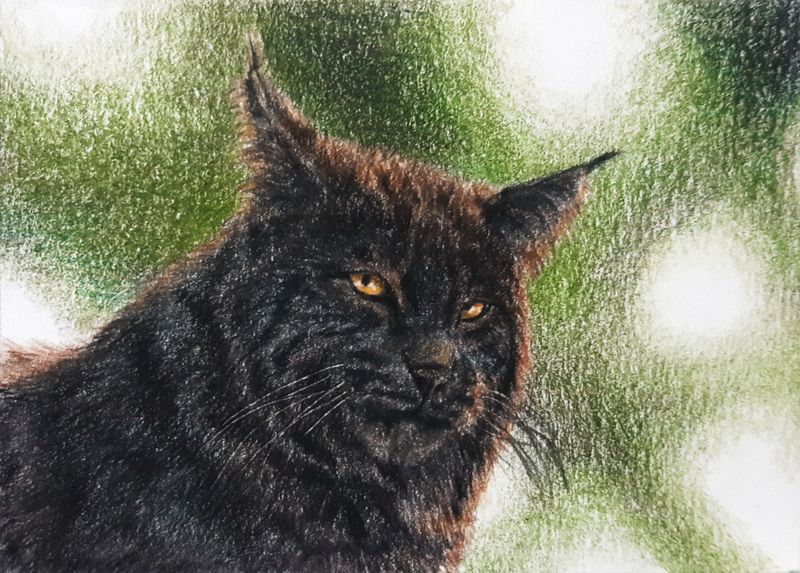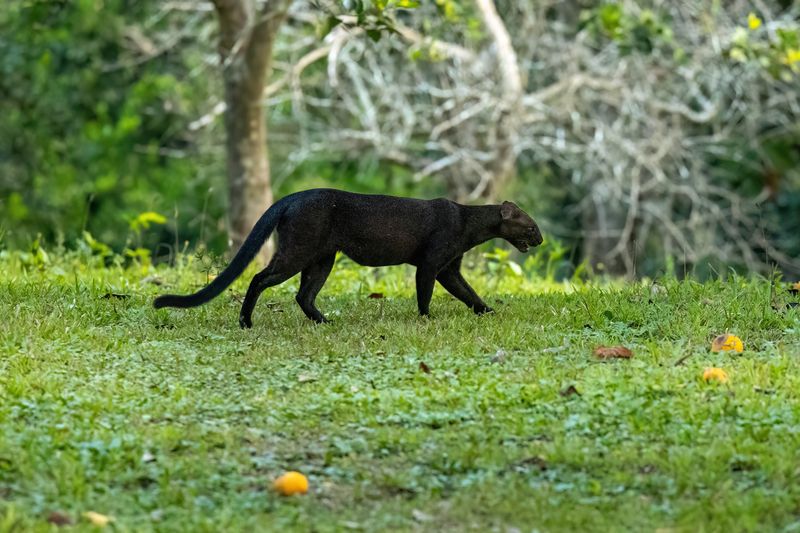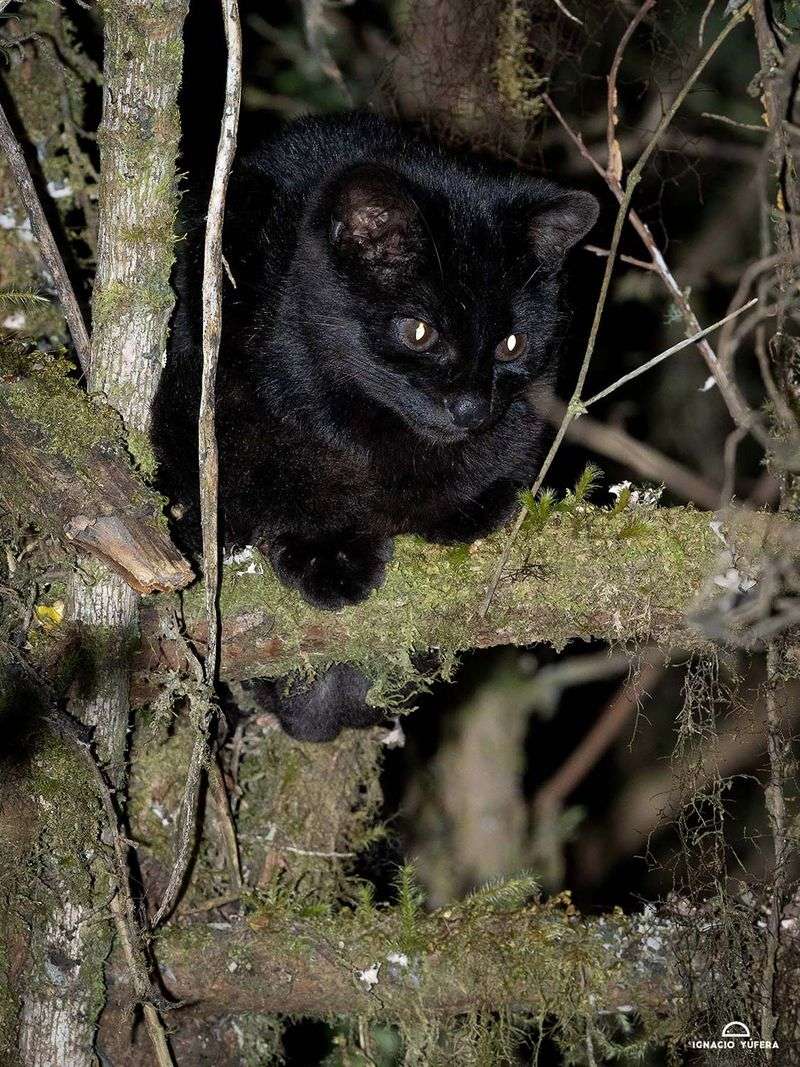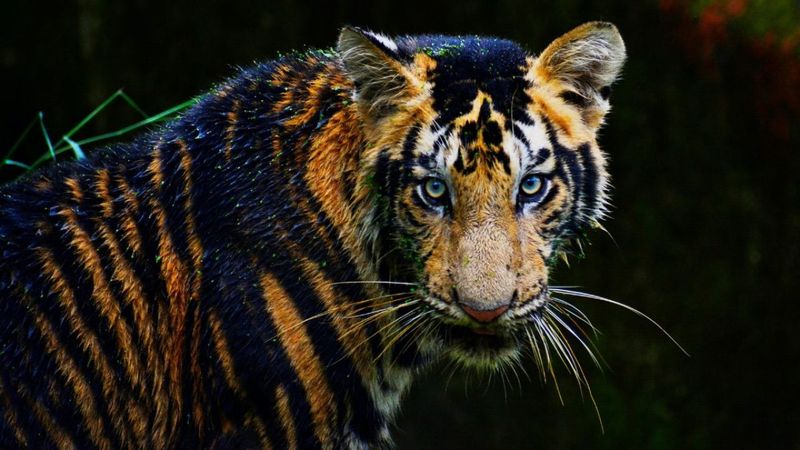📖 Table of Content:
Black big cats draw attention with their deep, shadowy coats that evoke both mystery and power. Their presence in the wild feels almost otherworldly, blending stealth with beauty. This striking appearance is the result of a genetic trait known as melanism.
Melanism causes an increase in dark pigmentation, resulting in black fur that often masks the usual spots or stripes beneath. This trait appears in several big cat species, including leopards and jaguars. Despite their dark color, the patterns are often still faintly visible under certain lighting.
Beyond their visual appeal, these melanistic cats possess traits that offer real survival advantages. Their darker coats provide better camouflage in dense forests and during nighttime hunts. Research has even suggested potential links between melanism and enhanced immunity or adaptability.
1. Black Panther
Most people don’t realize that black panthers are actually melanistic leopards with a genetic twist. Their dark coats help them blend perfectly into shadowy jungle environments where regular spotted leopards might stand out.
Dense rainforest canopies create deep shadows where these cats become nearly invisible to both prey and predators. The extra melanin in their fur also protects against harmful UV rays in tropical climates.
Studies show melanistic leopards have higher hunting success rates during dawn and dusk hours when shadows are longest.
2. Melanistic Jaguar
Amazon rainforests hide some of nature’s most impressive predators, including melanistic jaguars with coal-black coats. These cats dominate their territories with 30% more muscle mass than regular jaguars, making them incredibly powerful hunters.
Their dark coloration provides perfect camouflage among the dense vegetation and deep shadows of the forest floor. Local indigenous peoples have long considered black jaguars as spiritual guardians of the rainforest.
Research indicates that melanistic jaguars have enhanced night vision capabilities, giving them a significant advantage during nocturnal hunts.
3. Black Serval
African savannas occasionally produce melanistic servals that look like miniature black panthers with oversized ears. These rare cats use their dark coats to hunt more effectively during twilight hours when most prey animals are active.
Their melanism helps them blend into burned grasslands and shadowy areas near water sources. The condition appears more frequently in highland regions where cooler temperatures favor darker coloration.
Melanistic servals have been observed catching 20% more prey than their spotted relatives, particularly small mammals and ground-dwelling birds.
4. Black Bobcat
Northeastern forests sometimes produce melanistic bobcats that trade their usual spots for solid black coats. These cats excel at hunting in thick underbrush where their dark coloration makes them practically invisible to unsuspecting prey.
The melanism gene appears more frequently in areas with dense canopy cover and limited sunlight penetration. Black bobcats show remarkable adaptability to various forest environments from swamps to mountain woodlands.
Wildlife biologists have noted that melanistic bobcats tend to have larger territories and higher reproductive success rates than their spotted counterparts.
5. Black Jaguarundi
Tropical forests from Mexico to Argentina hide melanistic jaguarundis that look more like large weasels than typical cats. Their uniform black coloration eliminates the usual color variations seen in normal jaguarundis, creating perfect forest camouflage.
These cats benefit from melanism by becoming virtually invisible in dense undergrowth and fallen logs. Their dark coats also help them thermoregulate in humid tropical climates where overheating can be dangerous.
Behavioral studies show that melanistic jaguarundis are more active during daylight hours than their lighter relatives, suggesting their coloration provides adequate concealment even in bright conditions.
6. Melanistic Oncilla
Picture a house cat that decided to become a fierce jungle warrior. The melanistic oncilla transforms from its typical spotted golden coat into a creature of pure shadow.
This tiny South American wildcat, weighing only 3-7 pounds, uses its rare black coloration as the ultimate stealth weapon. Dense rainforest canopies create perfect hunting conditions where normal spotted patterns would stand out like neon signs.
Scientists believe melanism in oncillas provides crucial advantages during their preferred nighttime hunts. The dark fur absorbs heat more efficiently during cool mountain nights. Additionally, their black coats make them nearly invisible when stalking prey through thick vegetation, giving them a significant edge over their lighter-colored relatives in the competitive world of small cat survival.
7. Melanistic Tiger
With a coat of deep velvet and stripes that whisper in shadow, the black tiger stands apart from its more common relatives. Its presence is both powerful and otherworldly. Such rarity elevates it to the level of a living myth.
Black tigers gain significant advantages when hunting in dense mangrove swamps and shadowy forest understories. Their dark coloration allows for nearly perfect concealment during ambush situations.
The melanistic trait also provides enhanced protection against biting insects in tropical environments, as darker fur tends to repel certain pests more effectively. This adaptation could prove increasingly valuable as climate change alters traditional tiger habitats across Asia.
